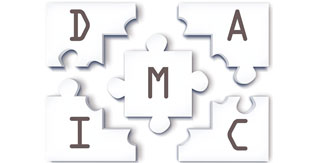The Problem Solving Strategy Y = f(x) in Lean Six Sigma
Six Sigma allows you to have a well-structured and systematic approach to solving both process and business problems. And with the help of the DMAIC (Define, Measure, Analyze, Improve, Control) roadmap, you'll have all the methods and tools you need not only to determine the problem as well as to analyze it and get to a solution.
However, since you have many different tools that need to be used in a specific order and sequentially, many beginners tend to feel overwhelmed and lost. So, one of the best ways to overcome this problem once and for all is to use the concept of Y = f (x).
Simply put, the Y = f(x) means that the process outcome is a result of the different process inputs. The ultimate goal of DMAIC is to be able to identify which are the few processes and input variables that have more influence on the process outcome measures. So, you can simply see that each one of the DMAIC phases can be described as how it contributes to the goal:
However, since you have many different tools that need to be used in a specific order and sequentially, many beginners tend to feel overwhelmed and lost. So, one of the best ways to overcome this problem once and for all is to use the concept of Y = f (x).
Simply put, the Y = f(x) means that the process outcome is a result of the different process inputs. The ultimate goal of DMAIC is to be able to identify which are the few processes and input variables that have more influence on the process outcome measures. So, you can simply see that each one of the DMAIC phases can be described as how it contributes to the goal:
#1: Define: Understanding the project Y and how you can measure it.
Most projects usually start with an undefined business or process problem and knowing where to start can be difficult. So, your main goal here needs to be to start by clearly stating the problem.
#2: Measure: Prioritizing the potential x's and measuring both the x's and the Y.
This stage usually begins with a detailed process mapping, which will help you identify the all the potential causes (the x's) as well as the ones that can have a greater influence on the Y. Since you haven't got any facts or data yet, you need to remember that you're basing your decisions only on your perceptions. Only after this is that your team needs to collect the data not only for measuring the x's and the Y as well as to identify the cause-and-effect relationships. Then, the team needs to identify any patterns in the data collected by using different charts. Sometimes, you may need to use Pareto analysis to help you during the process.
#3: Analyze: Testing the different relationships between the x and the Y and quantify or verify the most important x's.
If you're afraid because there are so many different tools to perform the analyses, you don't have to. They only exist because there are different types of data (discrete or continuous). This is the phase where you'll need to analyze all the statistical tools like the regression analysis, hypothesis tests, among others, as well as all graphical tools like scatter plots, pie charts, stratified frequency plots, among others.
#4: Improve: Implementing the solutions that allow you to improve the Y and also address the most important x's.
This is the phase where you're looking for solutions to the problems you've identified. When you find yourself with many different solutions, you need to use one single criterion and select the best solutions according to that criterion only. Despite there are many different criteria, there are two that are the most used: how much the solution addresses the specific x's and how much the solution contributes to improving the Y.
#5: Control: Monitoring, over time, the most important x's and the Y.
In this phase, you'll need to make sure that the new performance of the Y can be maintained over time. So, you'll need to create a process management chart that will show the critical checkpoints that occur during the process, the new process flow, as well as any recommended actions in case it's not working as it should.
If you're interested in continuing your learning, you can read more about lean six sigma topics here.
If you're interested in continuing your learning, you can read more about lean six sigma topics here.

